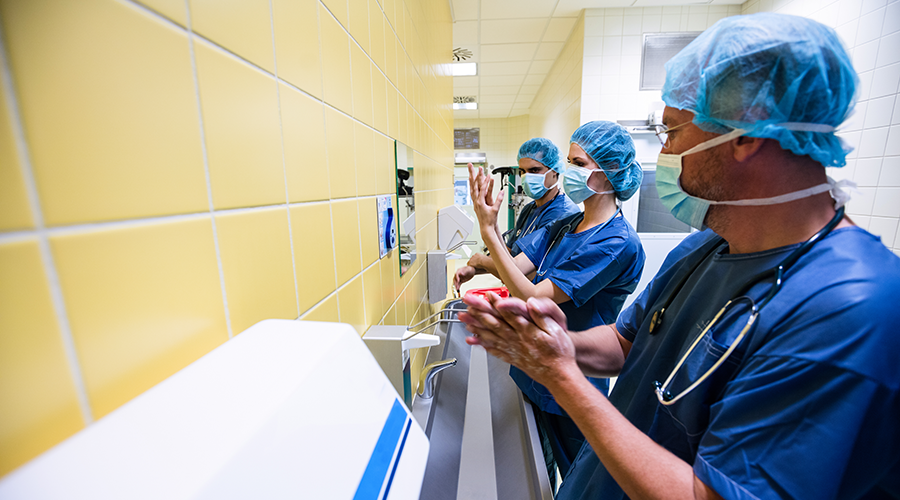Handwashing became a top priority in hospitals and other healthcare facilities with the onset of the COVID-19 pandemic to help stop the spread of infections and illnesses. More than two years later, though, the practice remains a challenge for staff and occupants of these facilities. Now a study offers insights on one tactic to help make the practice more effective.
A new study has found that portable thermal imaging cameras might improve hand hygiene in health care professionals.
The pilot study, which was published in the American Journal of Infection Control (AJIC) has proposed a new approach to assessing and improving hand hygiene practices in hospitals.
Read Next: Automated Hand Hygiene Monitoring Systems Promote Cleaner Healthcare Facilities
“Effective hand hygiene is recognized as the single most important act to prevent the transmission of potentially pathogenic microbes in the healthcare setting, but there is no widely adopted method for assessing the effectiveness of healthcare professionals’ hand hygiene technique,” says John Boyce, MD, a private consultant at J.M. Boyce Consulting, and a study author. “Our study shows that thermal imaging shows promise as an approach that warrants additional research to determine if it can be used for routine monitoring of hand hygiene technique to improve patient care.”
Both the Centers for Disease Control and Prevention and the World Health Organization recommend the use of alcohol-based hands (ABHS) in their hand hygiene guidelines. ABHS can be unreliable because application techniques can impact its antimicrobial effectiveness. Several studies have found that healthcare professionals regularly fail to apply ABHS to their thumbs and fingertips.
Boyce and his colleague, Richard A. Martinello, MD, wanted to explore whether thermal imaging with a portable infrared camera could improve hand hygiene in the health sector. Boyce and Martinello suggested that using the thermal imaging camera to regularly test whether ABHS had been applied could encourage better application.
The researchers obtained thermal images of 12 healthcare professionals using an infrared camera attached to an iPhone. They recorded baseline readings from the mid-palm area, the tips of the third finger and the thumb. The participants were tested immediately after their hands felt dry, and then one and two minutes later. This was repeated at multiple points during the study.

 UF Health Hospitals Rely on Green Globes to Realize Their Full Potential
UF Health Hospitals Rely on Green Globes to Realize Their Full Potential How Healthcare Facilities Can Be Truly Disaster-Resilient
How Healthcare Facilities Can Be Truly Disaster-Resilient TriasMD Breaks Ground on DISC Surgery Center for San Fernando Valley
TriasMD Breaks Ground on DISC Surgery Center for San Fernando Valley Bigfork Valley Hospital Falls Victim to Data Breach
Bigfork Valley Hospital Falls Victim to Data Breach AI-Driven Facilities: Strategic Planning and Cost Management
AI-Driven Facilities: Strategic Planning and Cost Management